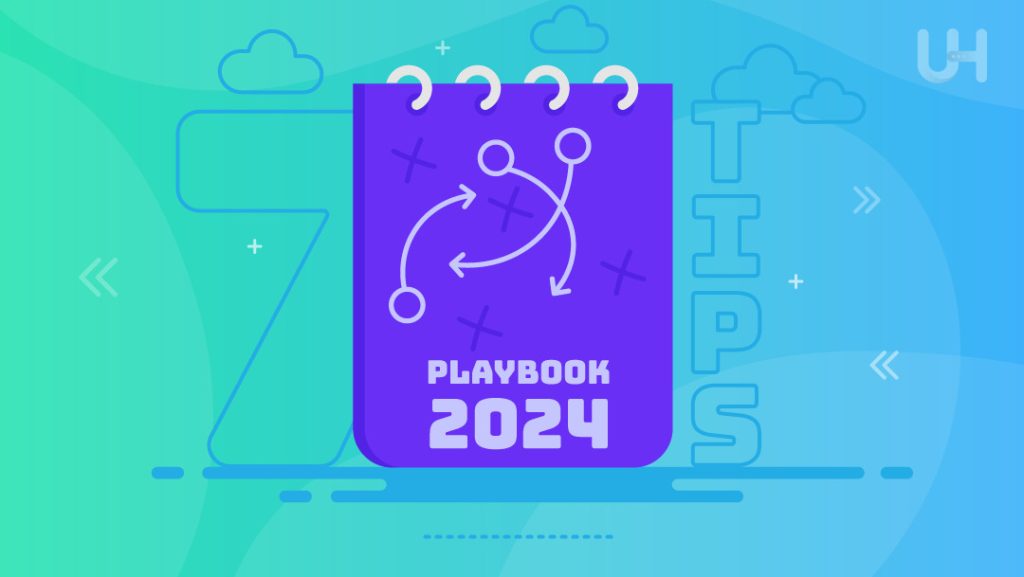Creating an effective content calendar is very important for managing content and for successful strategies in online marketing now. A content calendar works like a map, and it helps ensure that the content matches the big goals of the business, keeps things regular, is related to what matters, and gets the attention of people who read or watch it.
In this guide, we will investigate important ideas and valuable methods for creating and controlling a schedule for your content that enhances the effectiveness of your content projects. We will cover everything to provide you with content calendar best practices, from planning with specific objectives to examining how well your content performs. Every part helps form a complete strategy designed to get significant outcomes in your marketing efforts with content.
What is a Content Calendar?
It includes all critical rules and parts needed to build a strong plan for your content dates. This means you must decide the main goals, know who your audience is and what they like, and plan when to create and share content. You also need to choose what kind of content you will make, like writings, videos, or posts on social networks, and how often you should post them so people stay interested and involved. Content calendars are important for creators, and that’s why they are always in demand; there is a blog content calendar, article content calendar, posts content calendar, and many others.
Fundamentals of an effective content calendar include choosing the right tools and platforms to manage it and making sure that all team members can access it easily and work together. It is important to match the content with the main marketing strategies, and business aims for better results and relevance. When organizations concentrate on these basic parts, they can create a strong structure for their content schedule. This allows them to make their work processes more efficient, use resources better, and, in the end, lead to significant interaction with the people they want to reach.
Goal-Oriented Planning For Your Calendar

This method ensures that the content is not just for publishing but also helps to reach the main business objectives. The planning focused on goals has three important parts:
- Defining Clear Objectives: This means you must precisely explain the purpose of the content, like increasing brand recognition, generating potential customer contacts, keeping existing customers, or different company goals.
- Key Performance Indicators (KPIs): Knowing the right key performance indicators helps to check how well content is performing compared to goals set earlier. Things like the number of visitors on a website, how much people interact, the rates at which they complete desired actions, and the times they share on social media give useful information about how the content works.
- Tailoring Content Strategies: Content strategies help meet specific goals and KPIs. They can include crafting messages that fit the target, choosing the right types of content, and deciding on the best ways to share it so that it has a strong effect and reaches the intended results.
Supercharge Your Content Calendar Strategy!
Does your content calendar need a boost? Pair it with UltaHost Blog Hosting to optimize your content calendar strategy. With a managed WordPress, blazing speed, and ironclad security, you can cultivate your online presence.
Audience-Centric Themes
Themes focused on the audience put importance on knowing what they like, want, and their problems to help make better choices when creating content. When brands focus their themes on what the audience needs, they can build stronger relationships and get more involvement. This means researching the audience to understand their characteristics, how they act, and their psychological profiles. It helps in finding out topics and ideas that connect well with the target audience.
Making themes that focus on the audience means understanding what they feel, their problems, hopes, and what they are interested in. When content matches what the audience wants and why they want it, companies can create content that is important to people and gets them involved. This not only improves how users feel about the service but also makes the brand a reliable place for information and solutions in its specific area.
Structured Formats
It is significant to arrange the material in a clear structure for better understanding and easy access. This includes using uniform formats and designs for different kinds of content, improving how easily it can be read, and the overall experience for users. Within structured formats, two key aspects are addressed:
- Date and Time Allocation: Setting particular days and hours to post content in the schedule. Following a set plan helps companies keep their posts regular and get the most attention from people who follow them.
- Content Type Categorization: This subsection is about sorting content by its form, such as writings, films, visual data summaries, or audio shows. When brands arrange their content into these different groups, they can provide a variety of materials and meet people’s different tastes and ways of taking in information.
Ideation and Research
It is about coming up with new ideas for content and doing deep research to ensure that they fit well and are correct. This step starts with group thinking meetings to generate many different ideas for content that match the brand’s goals and connect with the people you want to reach. These ideas are then refined through research to validate their potential effectiveness and feasibility.
Thinking up new ideas and studying them requires creating an environment where creativity and fresh thinking are encouraged among the content-creating team. By promoting teamwork and free talking, everyone can offer different viewpoints and special thoughts, which supports a creative atmosphere and helps move the process of coming up with ideas forward.
Research is very important for confirming ideas for content and finding the right subjects that meet what the audience wants. Ideation and research are also important to learn how to create effective content calendar for blogs, articles, social media posts, etc.
Workflow and Collaboration
Improving how you work together and making your workflow better tries to make the process of creating content smoother by helping team members work well and coordinate with each other. This means setting up clear ways of working and talking to each other so that all team members can cooperate without any problems. By making these work processes better, companies can improve how fast they do things, lessen delays, and make sure that the best quality content is delivered on time to unlock success and achieve a goal.
Task Assignment and Tracking
When you give people jobs that match their abilities and when they have time, it helps everyone be clear about who is responsible for what. This makes managing the work easier. If you keep an eye on how things are moving forward and pay attention to important steps in the process, you can quickly take care of any problems that might slow you down so that your project stays on time. This includes optimizing your landing page to enhance user engagement and conversion rates.
Revision and Approval Processes
Creating clear rules and ways of doing things makes sure the work stays the same and matches what your brand looks like. When different people who care about changing and saying yes to the content on social networking sites get involved, you receive many different ideas that can make the content better and more solid.
Tool Selection

Selecting the right technologies is very important to make effective content calendar management and help team members work together without problems. This means that you should find and use tools and technologies that fit well with what the content team needs and how they like to work. There are two critical elements to consider while picking tools:
- Integration Capabilities: Selecting technologies that work well with current software and systems, such as utilizing an online virtual machine, helps to make work more efficient and minimizes interruptions in the task.
- User-Friendly Interface: Selecting tools that are easy to understand and come with features that are friendly for users helps team members begin using them quickly and make more individuals use these tools.
Scheduling Strategies
To post on the internet, it’s important to choose the correct times and frequency so more people see your content not as a form of spam comment. You must understand when your audience is typically online and what their activities are there. You need to understand the specific rules for each online platform, too. Then, you can pick optimal times for sharing your content and grab the attention of your target audience.
Furthermore, it is important to plan how you share content on platforms to maintain interest from your audience for a long period.
- Frequency and Consistency: To maintain the interest and loyalty of your audience, it is important to publish content following a regular timetable. Consistently offering useful information helps create trust and dependability among your viewers, which motivates them to come back and interact more.
- Seasonal and Trend Integration: Planning content with thoughts about the different seasons, celebrations, and important events in your industry is good because it helps us focus on topics that are related to what’s happening now.
Performance Analysis
Performance Analysis is about looking at numbers and information to understand how well content marketing works. Keep an eye out for important things such as the number of people visiting your website, how they interact with it, and what they do there to figure out the results and financial benefits you get from your strategies for creating content. Upon examining this data, you gain insights into your audience’s behavior, including needs for scaling the infrastructure, like considering whether to buy server equipment. These insights enable you to adjust your approach to improve results.
Performance analysis helps companies improve their content plans and methods by using practical data analysis knowledge. By seeing which content does well and knowing why it works, companies can use similar strategies again, optimize server hosting, improve the content that is not doing so well, and change how they work to fit what their audience likes more.
Iterative Management
Iterative Management means using a flexible way to handle the schedule of content that always focuses on getting better and changing according to new feedback and analysis. This repeating process includes often checking and improving how you plan your content, what steps you take, and how you work to reach your goals.
- Feedback Integration: This highlights how crucial it is to ask for and include suggestions from different people involved, like those in the audience, individuals on your team, and other important participants.
- Agile Adaptation: This highlights the flexible method for managing content schedules, where groups repeatedly refine and adjust their plans and methods according to immediate insights and responses from the market.
Conclusions
To create effective content calendar, one must think deeply about basic rules, focus on the audience, and plan with strategy. When brands put goals first, organize their plans well, and work together, they can improve their process of creating content and get the most out of what they do with content. Furthermore, choosing the right tools, planning out schedules carefully, analyzing how well things perform, and managing everything step by step are very important for making content marketing better and more efficient over time.
Ultimately, mastering how to create a content calendar for a blog, article, social media campaign, or any other content is about a structured approach, such as determining key themes, setting realistic goals, and using scheduling tools.
If you’re planning to step up your content marketing game, consider using Ultahost’s email hosting service. It’s a great way to promote your website whenever you send an email or a message.
FAQ
Why is an effective content calendar vital for online marketing strategies?
An effective content calendar ensures content aligns with company goals, maintaining consistency, relevance, and audience engagement, thereby aiding in achieving marketing objectives.
What are the fundamental components of a content calendar?
The basic parts are to set goals, know who the audience is, plan and time content, choose the right kinds of content and places to put them, and make sure everyone on the team works together. Then, points create a solid base for managing content well.
How can content calendar planning be aligned with business objectives?
When you plan an effective content calendar based on goals, you first set specific objectives, choose the best ways to measure progress using key performance indicators, and shape your content tactics to fit particular aims and the audience’s requirements.
How does iterative management enhance the effectiveness of a content calendar?
Iterative management involves regular updates and adjustments based on feedback and performance analysis. By integrating diverse perspectives and employing flexible content management strategies, companies continually refine their content plans for optimal results.








